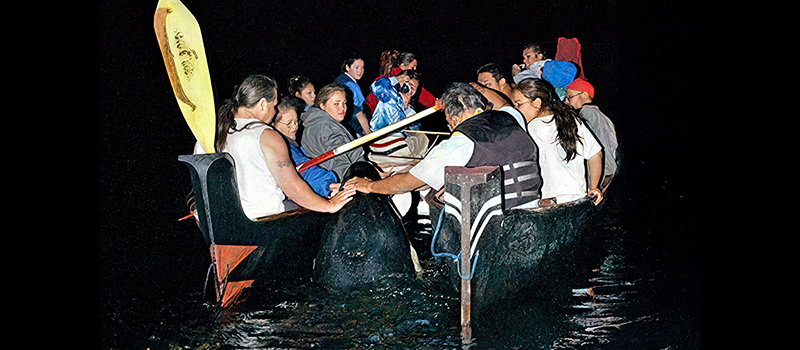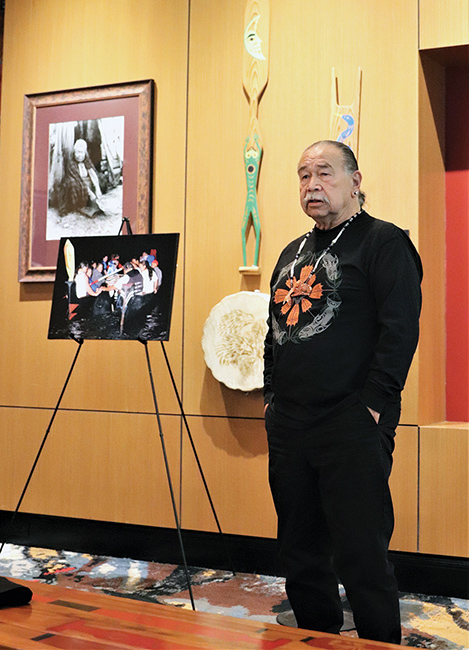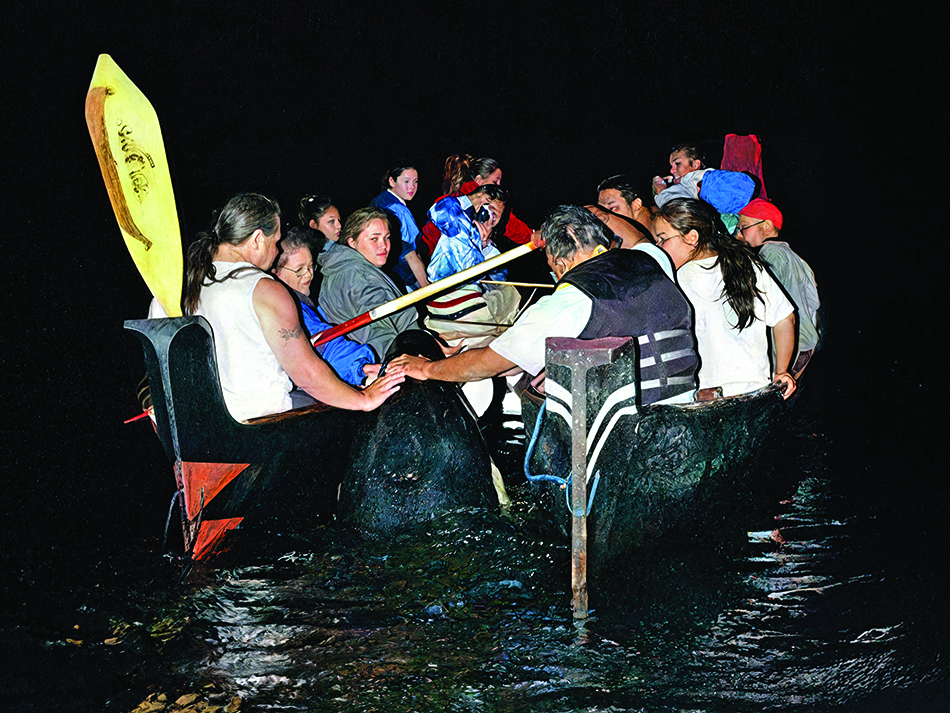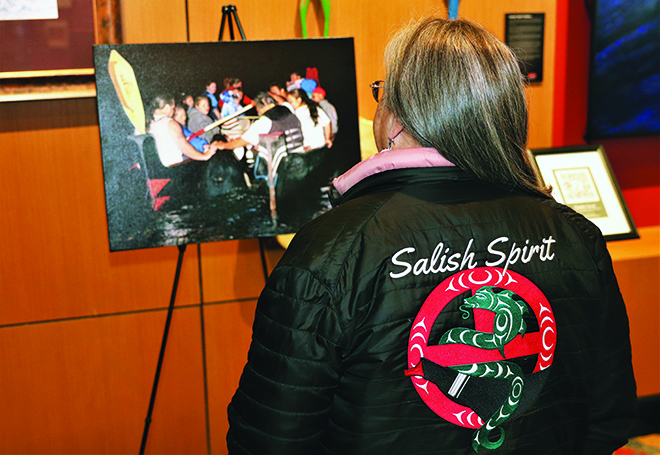
By Micheal Rios, Tulalip News
For generations, the Tulalip Tribes have been stewards of the land and sea. From ancestors long past to present day culture bearers, plus an entire Natural Resources department filled with committed employees, the Tribes’ stewardship is loudest in advocating for stronger protections of marine life. In particular, protecting the endangered Southern Resident killer whales and their primary food source, Chinook salmon.
Both the Southern Resident killer whales and Chinook salmon call the Salish Sea home. Their populations once thrived and flourished in the local waterways. Now, these two species face increasing threats due to global warming, pollution, habitat destruction, and an unregulated seal infestation.

In the spirit of Tulalip’s effort to restore ecological balance and ensure the survival of killer whales, the Tribes’ official logo, an intimate gathering took place within the Tulalip Resort Casino to celebrate World Whale Day. Taking place on the third Sunday in February, World Whale Day is an opportunity to honor these marine marvels and reflect on our culturally rooted relationship with them.
“We regularly create content for our social media platforms to share about Tulalip’s history and culture. In honor of World Whale Day, I thought what better way to share about history and culture than to have Ray Fryberg share his experience with an orca,” explained Kelsie Pablo, H.R. Hiring Manager for the Tulalip Gaming Organization. She reached out to Ray, who with his family, agreed to have their story shared via the Resort’s social media accounts.
“Our team sat down with Ray and recorded his retelling of that legendary encounter. It was an emotional story and a really incredible experience for all the staff involved,” continued Kelsie. “It really didn’t feel like enough to just post a quick video to our socials. So, we asked permission to share the video in our hotel lobby so it could be seen by all our guests who visit and stay at the Resort. We’re so excited to have this video on display and super grateful to Ray and his family for allowing us to share with and educate a larger public audience.”
Adding to the Word Whale Day celebration was the unveiling of a one-of-a-kind, digitally enhanced photo that clearly captured the momentous 2004 encounter between a killer whale and the Salish Spirit canoe family. In the photo, Ray is sitting in his captain’s seat and is embracing a killer whale that emerged from the Salish Sea.
In his retelling of the encounter, Ray, a Tulalip elder and cultural historian for the Tribes, makes it very clear this meeting was not by happenstance. Instead, it was foretold by the late Muchalaht First Nations chief Ambrose Maquinna. Prior to his death, chief Maquinna said that his spirt would be leaving his body soon, but not to worry because he’ll be coming back as a killer whale.
“When Ambrose passed away, within a week that killer whale showed up to their village,” recalled Ray. So, he and his Salish Spirit canoe family journeyed north to determine for themselves if it really was chief Ambrose in killer whale form. “We went out there and tried and tried to see him, but nothing happened. When we headed to shore and were just about to pull our canoe in, that’s when we got word he was seen in the area. So, we jumped back in our canoe and headed out, again.

“It didn’t take long for us to spot the killer whale. We were told that if we saw him to let him know we were here, so we started to sing. We could see him swimming ahead and next thing you know he stopped and turned to look at us. Then he took off and was coming straight at us like a torpedo. He didn’t dive all the way under water, instead he was swimming at the top so that the water was flying up. Right before it looked like he was going to run into us he dove under water and disappeared from sight.
“We didn’t have any idea where he was at. We’re looking all around and then he popped up right between the two canoes, like in the picture,” continued Ray. “He popped up right between chief Kelly and I’s captain seats. When he popped out of the water, he let out this exhale that was so powerful and so loud. He turned his head and looked right at me. We locked eyes and, in that moment, I never felt such strong spiritual energy in my life.”
The Tulalip Tribes, the successors in interest for the Snohomish, Snoqualmie, Skykomish and other allied bands, have a profound spiritual and cultural relationship with the killer whale. Often referred to as “Blackfish,” they are considered family members, protectors, and spiritual guides my many of our tribal members.

The Tribes have long understood, the survival of the killer whale is linked to the survival of the salmon, and the health of both is tied to the well-being of the ocean. Tulalip’s advocacy serves as a reminder that the balance of nature depends on collective effort and respect for the interconnectedness of all life.
After watching his legendary story be played in the hotel lobby and looking upon the stunning photo on display, Tulalip elder reflected, “That is the ultimate validation in the beliefs of my people.”